
Browse an alphabetical list of photographs. These historical images portray people, places, and events before, during, and after World War II and the Holocaust.
<< Previous | Displaying results 51-75 of 122 for "Photo" | Next >>
Jewish refugees board the SS Mouzinho for the voyage to the United States. Among these refugees is a group of Jewish children recently rescued from internment camps in France. Lisbon, Portugal, ca. June 10, 1941.
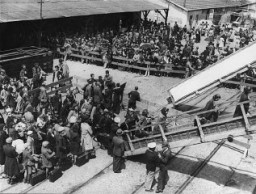
The bodies of former prisoners are piled in the crematorium mortuary in the newly liberated Dachau concentration camp. Dachau, Germany, April 29, 1945. This image is among the commonly reproduced and distributed, and often extremely graphic, images of liberation. These photographs provided powerful documentation of the crimes of the Nazi era.
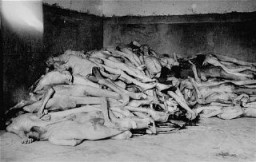
The bodies of SS General Reinhard Heydrich's assassins and five other operatives were displayed in front of the Carlo Boromeo Church (now the St. Cyril and Methodius Church). On May 27, 1942, two Czech parachute agents (Jan Kubis and Josef Gabcik) succeeded in rolling a hand grenade under Heydrich's vehicle. Heydrich later died from his wounds. Kubis and Gabcik went into hiding, joining with five other operatives in the Carlo Boromeo Church in Prague. On June 18, however, Nazi authorities became aware of…
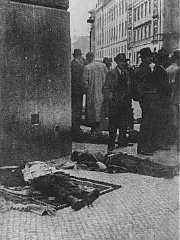
Victims of Ustasa (Croatian fascist) atrocities: the bodies of Jasenovac prisoners floating in the Sava River. Between August 1941 and April 1945.
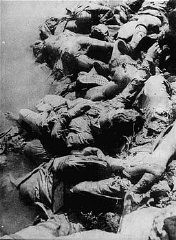
A US Army soldier views the bodies of prisoners piled on top of one another in the doorway of a barracks in Wöbbelin. Germany, May 4–5, 1945.
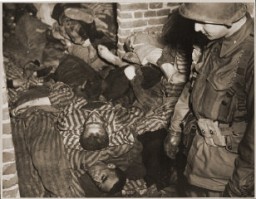
The bodies of prisoners killed in the Nordhausen concentration camp lie in a mass grave dug by German civilians under orders from US troops. Nordhausen, Germany, April 13-14, 1945.

Bodies of Soviet prisoners of war who died in an unidentified camp. Place and date uncertain (after the German invasion of the Soviet Union).
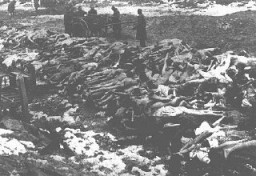
View of the main street of the Nordhausen concentration camp, outside of the central barracks (Boelke Kaserne), where the bodies of prisoners have been laid out in long rows. Nordhausen, Germany, April 13–14, 1945. This image is among the commonly reproduced and distributed, and often extremely graphic, images of liberation. These photographs provided powerful documentation of the crimes of the Nazi era.
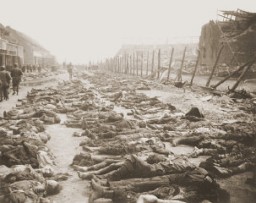
Corpses of victims of the Gunskirchen subcamp of the Mauthausen concentration camp. Austria, after May 5, 1945.
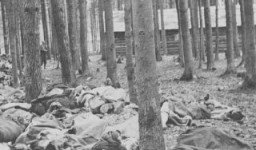
The bodies of former prisoners are stacked outside the crematorium in the newly liberated Buchenwald concentration camp. Buchenwald, Germany, April 23, 1945. This image is among the commonly reproduced and distributed, and often extremely graphic, images of liberation. These photographs provided powerful documentation of the crimes of the Nazi era.
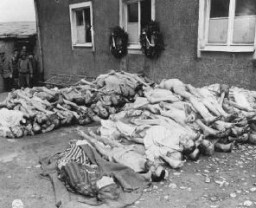
The bodies of former prisoners are piled outside the crematorium at the newly liberated Dachau concentration camp. Dachau, Germany, April–May 1945. This image is among the commonly reproduced and distributed, and often extremely graphic, images of liberation. These photographs provided powerful documentation of the crimes of the Nazi era.
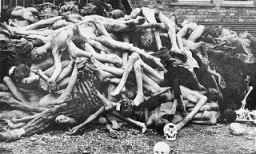
An American medic and soldier stand by the corpse of a prisoner shot on the road near Gardelegen. The prisoner was shot by the SS when he was too exhausted to continue on a death march. Germany, April 14-18, 1945.
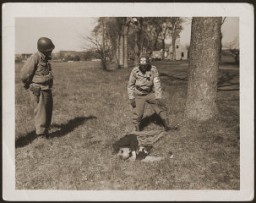
Palestine police remove the body of a refugee (draped in a Jewish flag), killed aboard the refugee ship Theodor Herzl during its unsuccessful attempt to run through a British naval blockade. Haifa port, Palestine, April 14, 1947.
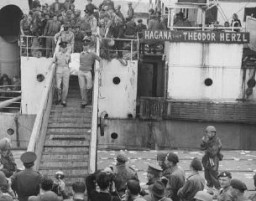
View of the bombed-out city of Nuremberg. Visible in the distance is the twin-spired Lorenz Church, and on the right, a statue of Kaiser Wilhelm I. Nuremberg, Germany, 1945.
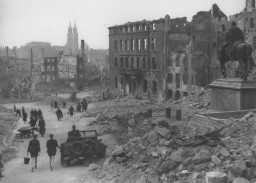
View of Rotterdam after German bombing in May 1940. Rotterdam, the Netherlands, 1940.

Bone-crushing machine used by Sonderkommando 1005 to grind the bones of victims after their bodies were burned in the Janowska camp. August 1944.
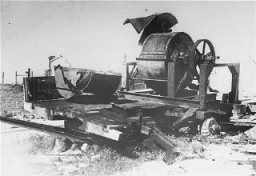
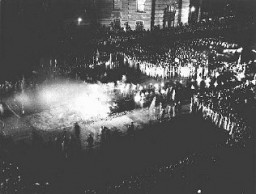
Crowds gather at Berlin's Opernplatz (opera square) for the burning of books deemed "un-German." Berlin, Germany, May 10, 1933.
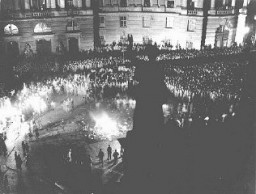
Books and writings deemed "un-German" are burned at the Opernplatz (Opera Square). Berlin, Germany, May 10, 1933.
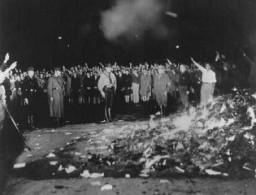
At Berlin's Opernplatz (Opera Square), an SA man throws books into the flames at the public burning of books deemed "un-German." This image is a still from a motion picture. Berlin, Germany, May 10, 1933.
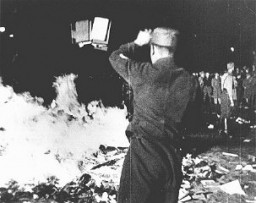
At Berlin's Opernplatz, the burning of books and other printed materials considered "un-German" by members of the SA and students from universities and colleges in Berlin. Germany, May 10, 1933.

At Berlin's Opernplatz, crowds of German students and members of the SA gather for the burning of books deemed "un-German." Berlin, Germany, May 10, 1933.
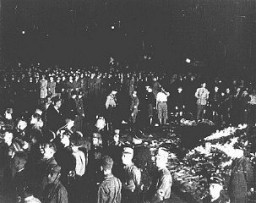
US soldiers discovered these boxcars loaded with dead prisoners outside the Dachau camp. Here, they force German boys—believed to be members of the Hitler Youth (Hitlerjugend; HJ)—to view the atrocity. Dachau, Germany, April 30, 1945.
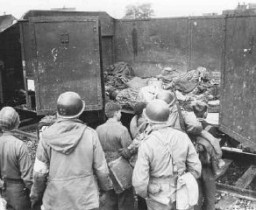
Members of the Storm Troopers (SA), with boycott signs, block the entrance to a Jewish-owned shop. One of the signs exhorts: "Germans! Defend yourselves! Don't buy from Jews!" Berlin, Germany, April 1, 1933.
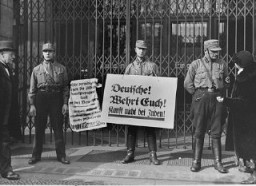
Scene during the boycott of Jewish businesses. A sign on truck carrying Storm Troopers (SA) urges "Germans! Defend yourselves. Don't buy from Jews." Berlin, Germany, April 1, 1933.
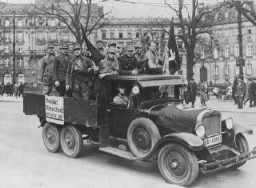
We would like to thank Crown Family Philanthropies, Abe and Ida Cooper Foundation, the Claims Conference, EVZ, and BMF for supporting the ongoing work to create content and resources for the Holocaust Encyclopedia. View the list of donor acknowledgement.